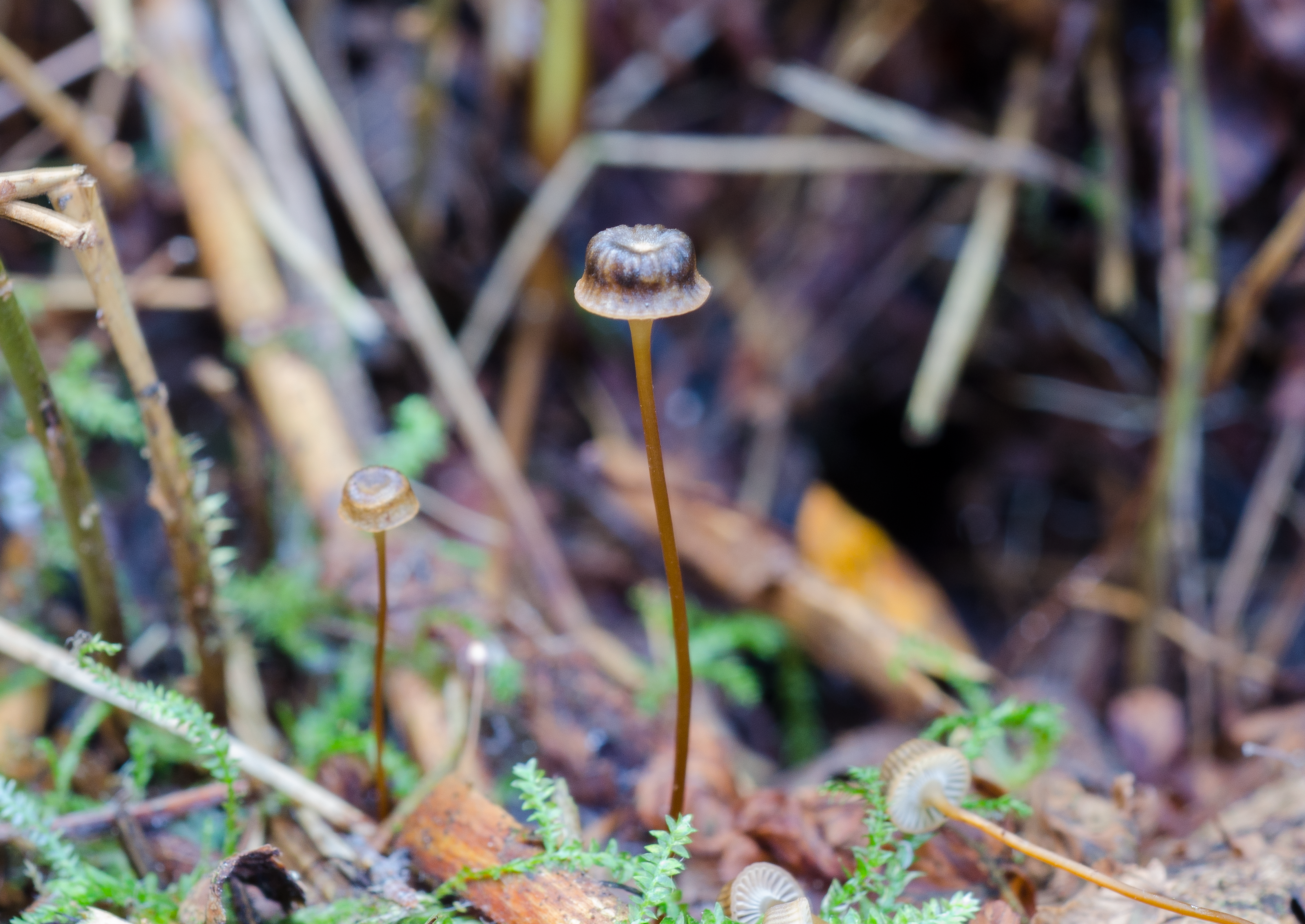Mycena picta
Mycena picta
- Innhold
- Description
- Ecology and distribution
Description
Cheilocystidia, basidium, hypha of the pileipellis and spores.
Cap 3-7 mm across and 2-5 mm high, cylindrical, not expanding with age, generally depressed at the centre, sulcate, translucent-striate, glabrous, greyish or violaceous grey to dark brown with blackish grey striae, the margin ochraceous or fulvous. Gills 18-24 reaching the stem, broader than the length, horizontal to decurrent, pale grey or pale buff, edge pale fulvous. Stem 20-38 x 1-3 mm, cartilaginous, cylindrical, equal, glabrous, yellow-brown or fulvous or black brown at the apex, darker towards reddish brown farther down, the base springing from a whorl of radiating, fulvous fibrils. Odour and taste indistinctive. Basidia 21-22 x 7-8 µm, clavate, 4-spored (and 2-spored). Spores 6.5-10(-11.5) x 4-5 µm, Q = 1.9-2.5, pip-shaped, amyloid. Cheilocystidia made up of contiguous chains of inflated cells, of which the terminal cells are 13.5-24 x 9-16 µm, obpyriform, globose, ellipsoid or, more rarely, clavate, variously diverticulate, with the excrescences straight to curved, simple or, more rarely, furcate or branched, 3-6(-14.5) x 1-1.5 µm. Pleurocystidia absent. Lamellar trama dextrinoid. Hyphae of the pileipellis 1-5 µm wide, smooth. Hyphae of the cortical layer of the stem smooth, without caulocystidia. Clamps present, but often hard to find, at the base of the basidia, the hyphae of the pileipellis and the lower cells of the cheilocystidia; the terminal cells of the cheilocystidia being unclamped.
Ecology and distribution
Solitary or in small groups in both deciduous as well as coniferous forests. On many substrates, e. g. apparently on the ground or on woody debris or on fallen, decaying trunks. Summer to autumn. Rare.

